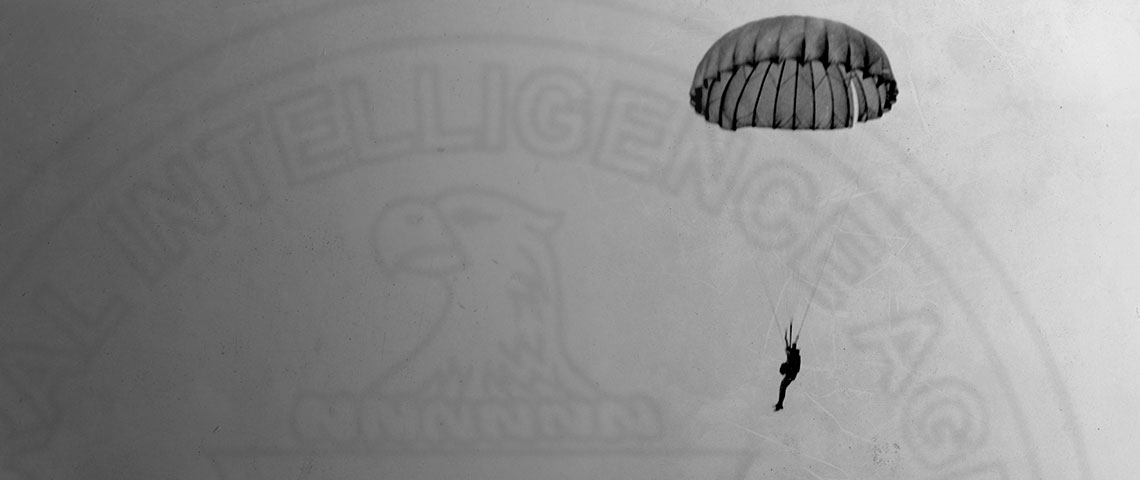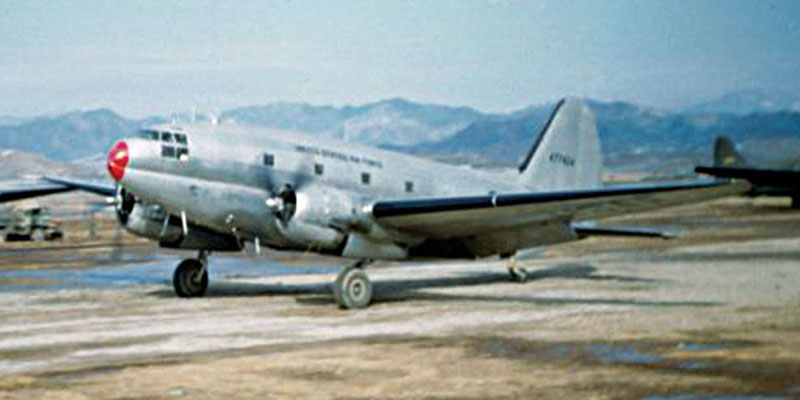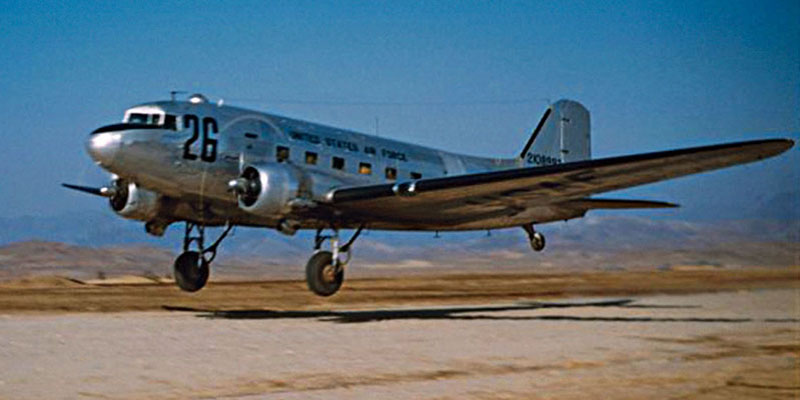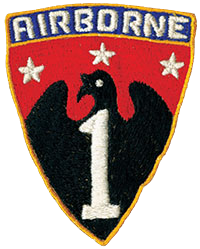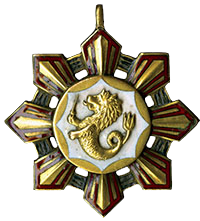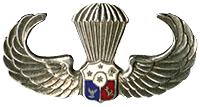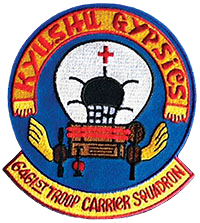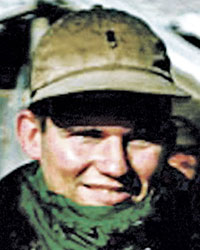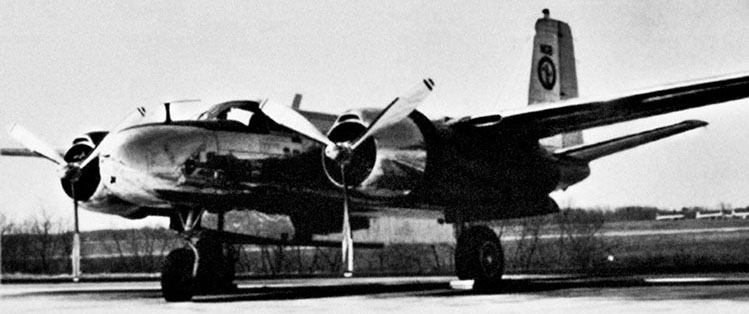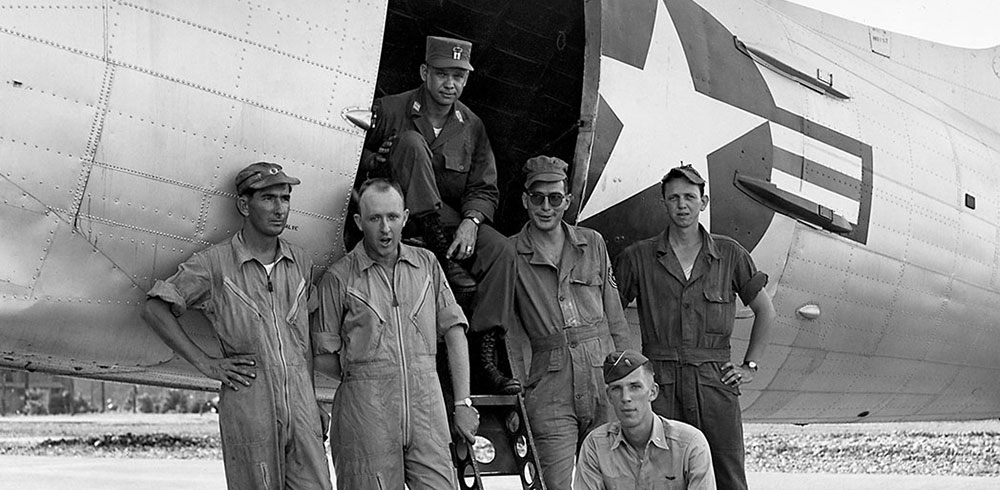The CIA was always interested in exploring alternative ways of infiltrating intelligence operatives behind enemy lines. High altitude parachute drops of personnel could be done with less chance of detection from the ground at night. However, free fall parachuting as we know it today was a relatively new recreational sport in 1952. The plethora of cheap surplus parachutes and light airplanes allowed daring civilians to probe dangerous frontiers.
“I felt like the proverbial guinea pig. I didn’t volunteer for this. Oxygen was something only bomber crews used in World War II. Altimeters were mounted in the aircraft instrument panel. My ‘instructor’ was a young Army captain who might have had a little more airborne experience than I had. He didn’t jump with me, only acted as the ‘jumpmaster,’ if you could call it that,” remembered CPT John Sadler, the 11th Airborne Division veteran. “He simply told me when to jump.”
“I started that first week by making five static line jumps using the standard Army T-7 parachute and reserve. The first was at 1500 feet and we gradually moved up to 2500 feet. The Army captain, wearing a radio headset, received altitude reports from the C-47 Skytrain pilot. Because it was summer I wore fatigues, jump boots, and a steel ‘pot,’ standard for ‘Hollywood’ jumps. It was only luck that I landed on the DZ (drop zone), which was anywhere on or near the airstrip. After those jumps I was briefed on how the WWII Air Force A-9 parachute with ‘sit on’ reserve worked. The main was activated by pulling a chest-mounted D-ring. The reserve D-ring was alongside my upper right leg. That’s what I wore for the ‘free fall’ jumps,” said Sadler. “My ‘instructor’ paid more attention to checking my harness, airdrop standards, and the specific jump altitudes. He did not have a recommended body position while I was ‘free falling,’ so I assumed the normal tight body position used for a static line parachute jump. Before each jump he told me a number to count to before yanking the ripcord.”
The WWII paratrooper added: “I admit that some of my counts were faster than others and I pulled my reserve twice. Dropping feet first in a tight airborne body position I fell like a rock. They didn’t know much about terminal velocity, the effect of winds aloft, and impact of parachute opening shock on the jumper. The old T-7 was notorious for ‘ringing your bell.’ The ‘free fall’ opening shocks were worse. My body was snapped and jerked like a ‘rag doll.’ There were some long rides under canopy, but I never landed on the DZ. The captain collected his data and the C-47 aircrew got some oxygen flight time. I was happy to survive the ‘training’ without injury. Nothing was put in my records. I just recorded the jumps in my personal log.”
CPT Sadler soon learned that snatch recovery training was another ‘experiment in progress’ and training would be just as informal as the parachute jumping. Fortunately, the Air Force C-47 crew remained the same. The subject matter expert (SME) on the system was from Wright-Patterson AFB, Ohio. However, that Air Force technical sergeant had never set up the snatch wire apparatus nor had he been recovered by an aircraft. “I found out that he had no instructions to assemble the apparatus, only a few drawings of it. It was a ‘Tinker Toy’ set in an OD (olive drab) canvas bag. We figured it out, learning as we went. By the time we got it put together, I noticed that we had company. A crowd of Air Force officers, wives, and children had gathered along the runway to watch the show. As the senior man I was delegated to explain the snatch recovery system and narrate while the SME acted as the first ‘wind dummy.’ Since neither of us had any practical experience, I helped him into the canvas-strap body harness, snugged down his chest and leg straps, and checked out the rope. The C-47 circling overhead was radioed that we were ready,” said Sadler. “It was game time.”
“CPT Casey, the C-47 pilot, banked his aircraft and dropped down on the deck … about twenty-five to thirty feet just parallel to the airstrip. A fixed metal recovery pole with a hook on the end hung down from the tail section of the roaring airplane. As the C-47 passed overhead it snagged the top horizontal rope. Casey pulled it up into a steep climb and the carefully laid out extraction rope snaked upwards with a jerk. The airman, seated facing the approaching airplane, was yanked backwards a foot off the ground for fifteen or twenty feet before flying upwards in a diagonal arc behind the rapidly vanishing airplane. In seconds he was dangling spread-eagled on a 100 foot line, twelve hundred feet in the air, speeding along at ninety knots. Twenty minutes later the C-47 landed, dropped off the SME, and took off again. It was my turn,” recounted CPT Sadler.
“As you can see, [shown in ‘Jerk for Jesus’ sidebar] I wore no helmet or goggles, just my Corcoran jump boots. The SME almost gleefully relinquished the snatch harness, helped me into it, and laid out the rope. Being an old T-4 paratrooper I cinched my leg straps tight. Casey repeated the flying sequence. Then, I rocketed up into the sky in a whipping motion. Once the C-47 reached the recovery altitude I felt a slight tug when they started the winch. I experienced no flopping even close to the fuselage. A pulley apparatus was mounted near the door to reduce tension. Then, I felt strong arms pulling me inside. After the two crewmen dragged me forward they disconnected me from my tether,” said CPT Sadler. “In retrospect, it was like a wild carnival ride. I did it four times. Like the SME, I had qualified on the recovery system and could speak with authority backed by experience. The next day an Air Force photographer took pictures to illustrate the order of assembly and erection and how to don the harness. That’s why I did the demonstration in khakis and Wellington boots. I’d have lost them in a real snatch.”
JACK had acquired another method to rescue of UN pilots downed over the Korean landmass. But, the system was retained by 5th Air Force and mounted in a detachable fuel tank under the wing of the commander’s four-engine C-54 Skymaster transport. Even with air superiority, rescuing airmen from Communist-controlled areas with slow-flying transports and helicopters was very dangerous. While a C-54 could drop the system, it could not do the snatch and its loitering overhead only served to alert enemy forces to a downed airman. Helicopters were precious commodities in Korea. Primitive was a polite description of the VFR (visual flight rules) navigation capabilities in daylight. They had limited flight range and load capacity. Since the Red Chinese and North Koreans had none, helicopters were desirable targets for technology exploitation. Despite these problems, aircrew recovery was a high priority military mission that JACK assumed to establish rapport with FEC.
The possible entrapment of UN air rescue elements was a constant that had to be closely weighed before committing non-expendable resources that might compound the situation. On 7 February 1952, the U.S. Navy lost an H-5 helicopter, its pilot, and an 8240th AU (LEOPARD BASE) officer trying to rescue a downed naval aviator. They joined the captured Navy pilot as POWs. Subsequently, the ‘Kyushu Gypsies’ lost a C-46, aircrew, and 8240th AVIARY personnel when a double-agent threw a hand grenade inside as he jumped out. A B-26 Invader, a couple of pilots, and two 8240th officers were shot down during a reconnaissance mission. Low flying aircraft were vulnerable to massed ground fire.
Shortly after returning to Korea, CPT Sadler was tasked to be mission commander for a pilot rescue. SFC Don Stephens volunteered to accompany him aboard the B-26 control aircraft. JACK had a radio report that one of their agent teams had gotten to a downed Navy pilot before the North Koreans and were requesting aircraft pick up. A name was provided and his ship had confirmed that he had been recently shot down. Background information was provided to verify his identity.
“When we got close to the location, I had the pilot fly a ‘three-sixty’ circle at about three thousand feet while I radioed the ‘agent team’ on the ground. I told them to put the American on the radio. As soon as he came on I began asking personal questions to confirm his identity. I was sure that it was an American talking and his answers were correct. I asked him to come outside of the hut so that I could see him talking on the radio. Then, we dropped down on the deck for a closer look. As we zoomed by in a banked attitude I could see that the speaker was definitely an American in a flight suit, but I was uneasy so I told him we’d make another pass. I switched to Volksdeutsch as we turned on final and asked if it was trap. He replied in country German that it was before being yanked back into the hut. Then, all hell broke loose. As we flew into a hail of ground fire our pilot rocked and twisted that bomber like a fighter plane to escape,” recounted Sadler. “We were shot at but got away unhurt. CPT Sadler ‘shut off’ the inbound helicopter and cancelled the mission. That was a very close call,” said SFC Stephens. “It happened so fast that I didn’t get a chance to fire the machine guns.”
On 29 November 1952, an intended snatch recovery of a Chinese agent from Manchuria turned into a debacle. An American-crewed CIA-affiliated, China Air Transport (CAT) C-47 was sent to airdrop supplies and the snatch system to recover the agent. Unbeknownst to the recovery personnel, their team on the ground had been compromised and turned. The promise of valuable intelligence carried by a courier was an effective lure. Approaching the pick-up trellis at close to stall speed, the C-47 flew into a cross fire from two well-camouflaged .50 cal. machine guns. The two men flying the transport were WWII Pacific fighter pilots. Norman H. Schwartz had been a Marine aviator [Distinguished Flying Cross (DFC) & Air Medals (AM)] and Robert C. Snoddy [AMs, Purple Heart (PH) & 2 kills) a Navy pilot. The two managed a controlled crash, but died, trapped in the cockpit, when the C-47 caught fire. Two CIA case officers, aboard to operate the retrieval winch and recover the agent, survived unhurt. John T. Downey and Richard G. Fecteau were captured by Chinese security forces, tried, and imprisoned for twenty and nineteen years respectively. President Richard M. Nixon’s diplomatic rapprochement with Communist China was the catalyst that eventually opened the prison doors for these two CIA personnel.
